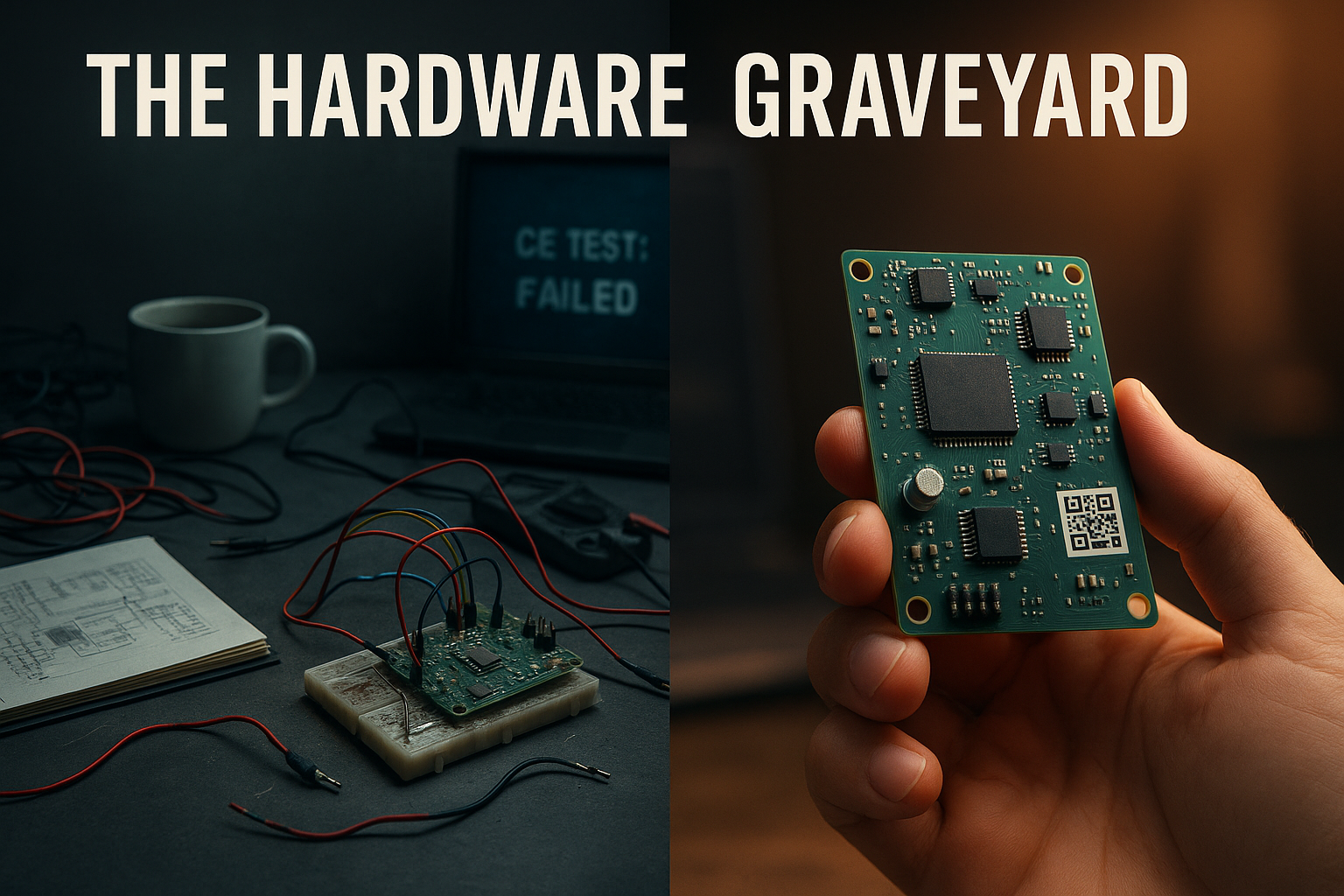
Building a hardware startup is not for the faint of heart. While software ventures often enjoy lower barriers to entry and the luxury of rapid iteration, hardware startups face unique and unforgiving challenges.
According to CB Insights and industry estimates, over 70% of hardware startups never reach mass production. These failures aren’t usually due to lack of innovation—but rather a disconnect between a great idea and the brutal realities of manufacturing, compliance, and scale.
This article is for founders, engineers, product managers, and investors who want to understand the pitfalls—and how to beat the odds.
The Hardware Graveyard: Why So Many Startups Fail
Building a working prototype is just the first step. Many startups falsely assume that a prototype means they’re "almost ready" for the market. In reality, the distance between a hand-assembled demo and a CE-certified, mass-producible product is enormous.
From sourcing and manufacturability to regulatory compliance and component obsolescence, the post-prototype phase is where most hardware dreams die.
The Top 5 Mistakes That Kill Hardware Startups
1. Design Not Ready for Production
A prototype may look and function well, but that doesn't mean it's ready for a production line. Often, PCB layouts are not optimized for SMT lines, BOMs include obsolete parts, and the files required by EMS providers (like Gerber, pick-and-place, or 3D step models) are incomplete or inconsistent.
Without an early Design for Manufacturability (DFM) review, teams risk discovering these issues too late—resulting in delays, costly rework, or a total redesign.
2. No Support for DFM, EMC, or CE/FCC Certification
EMC issues, radiation, ESD vulnerabilities—these don’t show up on a lab bench. Certification requirements like CE or FCC involve specific design practices: shielding, layout constraints, isolation strategies, and testing protocols. If ignored in the early design stage, compliance becomes a nightmare.
Startups often don’t plan for these processes or underestimate their cost and timeline. Certification failure means product launch failure.
3. Prototypes That Don’t Scale
Startups love 3D printing, dev boards, and hand-soldered components. But these don't scale. A prototype made with through-hole parts and fragile wires cannot be replicated in production without major changes.
Scaling requires consideration of component sourcing, assembly tolerances, enclosure manufacturability, and thermal behavior under load. Failure to account for these creates a chasm between MVP and volume manufacturing.
4. Choosing the Wrong EMS Partner
Cost is critical—but choosing the cheapest EMS often backfires. Startups need partners who can challenge their assumptions, validate their files, guide them through DFM, and ensure full traceability.
An EMS that doesn’t offer engineering support, test fixtures, or regulatory experience will deliver exactly what you send them—even if it’s flawed. And the responsibility (and cost) will be yours.
5. Lack of Transparency and Traceability
Traceability matters from day one. Without it, it’s impossible to track assembly issues, component failures, or field complaints. For regulated sectors like medical, defense, or automotive, lack of traceability can halt entire projects.
Startups that ignore this early often face expensive rebuilds, failed audits, or even product recalls.
How Hemargroup Helps You Beat the Odds
At Hemargroup, we work with startups across Europe—especially in high-stakes sectors like IoT, medical devices, and defense. Our mission is to help you go from idea to volume, with fewer surprises and stronger outcomes.
What makes us different:
- ✔️ In-depth DFM and design validation before production
- ✔️ Fast prototyping and small-batch runs with industrial-grade quality
- ✔️ Support for certifications
- ✔️ Full traceability: each PCB tracked via unique QR code
- ✔️ Swiss-made reliability, from engineering to assembly
Checklist: Is Your Project Really Ready for Production?
- ✅ Complete and validated BOM
- ✅ Production-ready Gerber and pick-and-place files
- ✅ 3D mechanical models for enclosures
- ✅ DFM review performed
- ✅ EMC and CE/FCC testing strategy in place
- ✅ Identified EMS with traceability and support capabilities
Don’t Be Part of the 70%
If you have a prototype and want to turn it into a real product—ready for production, compliant, and scalable—talk to us.
.png)
